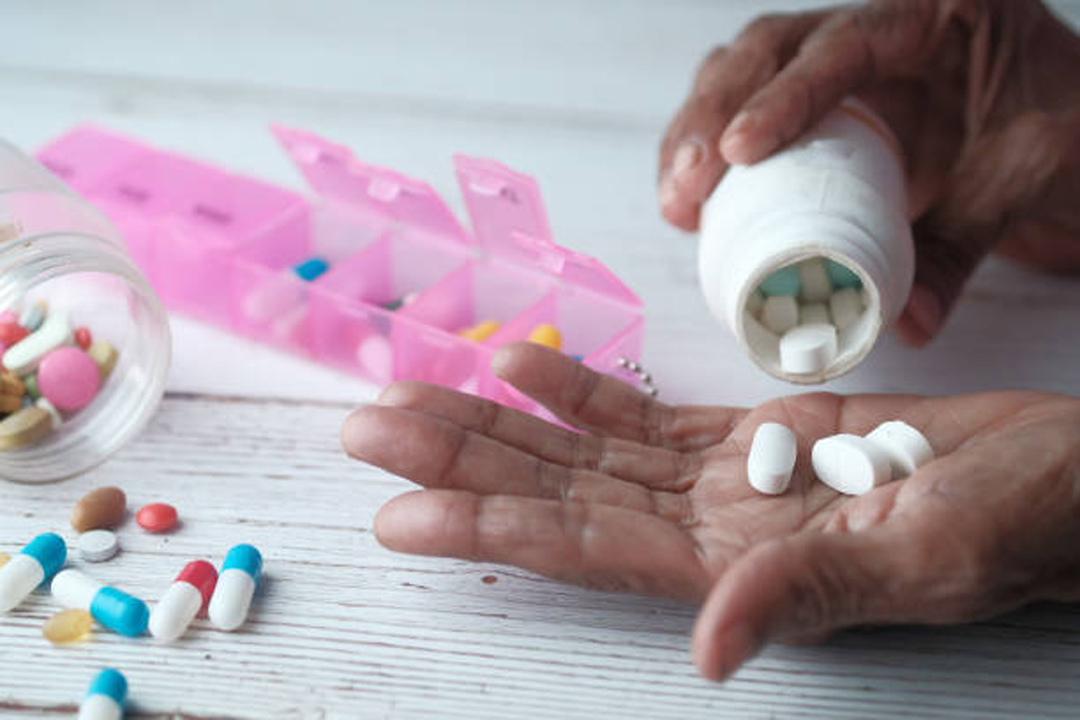Type 2 diabetes is on the rise, with almost 29 million people in the US diagnosed with the condition. However, there are four simple steps that can be taken to lower the chances of developing type 2 diabetes or better managing it if already diagnosed. Eating a healthy breakfast each morning, consuming whole grains, fruits, vegetables, nuts, and seeds that are high in fiber, controlling the intake of carbohydrates, and consuming leaner meats, less butter, cheese, and cream can all help reduce the risk of developing type 2 diabetes.
Exercise can also help control diabetes and prevent long-term complications, but it’s important to consult with a doctor before starting a new exercise routine, especially if on medication or with other health conditions. Staying hydrated and carrying a snack, phone, and medical tag while doing physical activities can also help to stay safe and healthy. By following these simple steps, it’s possible to take control of diabetes and live a healthy and active life.
Eat to stay alive
Type 2 diabetes, which is more common in elderly people, is becoming more widespread very quickly. Since 2004, the number of diagnosed cases in the U.S. has almost doubled, and now a shocking 29 million people have it. But if you follow just four simple steps, you can dramatically lower your chances of getting type 2 diabetes or better control it if you already have it.
- First, it’s important to eat a healthy meal every morning. Skipping breakfast can make you more likely to develop insulin resistance and become overweight. Studies have also indicated that those who have breakfast are less likely to eat high-calorie, high-fat items later in the day.
- Second, eating whole grains can help you control your blood sugar better and lower your risk of getting heart disease. Fruit, vegetables, nuts, and seeds, which are all high in fiber, can also make you feel full, which will help you lose weight.
- Third, controlling your blood glucose levels depends on how much carbohydrate you eat. Whole-grain meals, which are slowly digested and have a low glycemic index, can help you receive the right amount of carbs while also eating other things like dairy, meat, fish, and vegetables.
- Lastly, if you choose leaner meats, eat less butter, cheese, and cream, and cook your food in healthier ways like grilling, broiling, and steaming, you can greatly reduce your risk of getting type 2 diabetes or better manage it if you already have it. By doing these four simple things, you can take a step toward improving your health and avoiding the crippling impacts of type 2 diabetes.
Move forward
Some people with diabetes find the concept of exercise scary because they are afraid it will make their blood sugar control worse. But physical activity, along with a good diet and the right medications, can help control diabetes and keep long-term problems from happening. Whether you have type 1 or type 2 diabetes, this is true.
Before starting a new exercise routine, it’s important to talk to a doctor, especially if you’re on medication, prone to hypoglycemia, have diabetes complications like foot or eye problems, or have other conditions like heart or lung disease that may affect your ability to exercise.
Your family doctor or a specialist in diabetes can help you come up with a safe and effective exercise regimen that fits your needs and situation. You can take control of your diabetes and live a healthy, active life by working with your healthcare team and being smart about how you exercise.
Drink water

If you have diabetes, you should consume about 500ml (2 cups) of water before you start working out. Also, you should have a water bottle or glucose drink with you while you work out to keep from being dehydrated and to keep your blood sugar levels steady. Staying hydrated is important for your general health and well-being, especially if you have diabetes and are more likely to get dehydrated or have your blood sugar go up and down.
Be safe alone
If you’re doing something hard, like running alone in the country, it’s crucial to keep yourself safe by taking specific steps. Bring a snack with a lot of carbs if you want to keep your energy up during the activity. It’s also a good idea to carry a cell phone with you in case of an emergency or if you need to call for help. Also, if you wear a medical tag or bracelet, it can tell people crucial information about your health in case of an emergency. These easy steps will help you stay safe and healthy when you’re doing physical activities.
Keep on testing
If you take insulin, you should check your blood sugar before, during, and after exercise to see how the activity affects your blood sugar and to make sure it stays in your target range. Also, if you have type 1 diabetes, you should monitor your blood sugar at frequent intervals for a few hours after you exercise. Since insulin and carbohydrate intake need to be in balance for exercise, changes may need to be made on the day of activity and for roughly a day later. This could mean taking less insulin or eating more carbs, or a combination of the two. It is important to keep a close eye on your blood glucose levels so you can make the changes that work best for you.
Eat to prevent diabetes in your unborn child
Eating well when pregnant has several benefits, such as lowering the chance that your child may get type 2 diabetes as an adult. Researchers think that a bad diet can cause the cells in the pancreas that make insulin to grow in an irregular way. If you don’t get enough nutrients, these cells may also age faster than they should, which makes it more likely that you’ll get type 2 diabetes in the future. So, eating a good, balanced diet throughout pregnancy is important for both the mother and the baby’s health, and it can also help the baby’s health in the long run.
Are you in danger?
Did you know that you may find out how likely it is that you will get type 2 diabetes without going to the doctor? Having a close relative with diabetes, being older than 35, being Asian, African, or Caribbean, being overweight (especially with a big waist), having diabetes during pregnancy, not being physically active, having high blood pressure or a history of heart attack or stroke, and having polycystic ovary syndrome are all important things to think about.
If the test shows that you are at risk, you should think about making adjustments to your life to lower your chances of getting diabetes. You should also talk to your doctor for more tips on how to lower your chances of getting this illness. By being aware of your risk factors and taking actions to live a healthy life, you can cut your chance of getting type 2 diabetes by a lot.
Use your smartphone to help

Modern technology may help a lot with managing diabetes. For example, there are now a lot of apps for smartphones that can aid with managing diabetes. Doing a short search on the internet will show you that there are a lot of apps for different kinds of cellphones that can record things like blood glucose test results, weight, and calories eaten. You can also write down how you feel and other things that affect how high or low your blood sugar is. This information can then be used during your next doctor’s appointment or even shared directly to your diabetic care team.
Using these applications can help you better understand and take care of your illness. They can also make it easier for you and your healthcare providers to talk to each other. By keeping track of your blood glucose levels and other important data on a regular basis, you can find patterns and make smart choices about how to manage your diabetes. If you have diabetes, these applications can be quite helpful and can make a big difference in helping you stay healthy and in charge.
Take care of your feet
People with diabetes are more likely to get foot sores or ulcers, but there are things they may do to lower their risk, such as:
- Cut your toenails straight across to keep them from growing into your skin.
- Every day, wash your feet with warm water and a gentle soap, and then dry them carefully while checking for cuts or sores.
- After you wash your feet, moisturize them, especially the heels, to keep the skin soft.
- Don’t pop blisters, trim corns or calluses, or put corn plasters on your feet.
- Rotate your ankles and wiggle your toes every so often throughout the day to get more blood to your feet.
- Wear shoes that fit well, particularly with socks or tights, and the right shoes when you play sports or do other active activities.
- If your feet don’t feel well, don’t walk around barefoot. Instead, use flip-flops or sandals on hot surfaces like sand or concrete.
- Get your feet checked by a chiropodist or podiatrist once a year to keep an eye on their health and spot any problems early.
By following these suggestions and taking care of their feet, people with diabetes can lower their risk of foot problems and keep their feet in the best shape possible. Talk to your doctor if you are worried about your foot health or if you see signs of an injury or infection.
Watch out for drug triggers

It’s crucial to know what could go wrong if you take certain medicines at the same time. US scientists have recently found that taking two commonly prescribed drugs at the same time, like the antidepressant paroxetine and the cholesterol-lowering drug pravastatin, can lead to an unexpected rise in blood glucose levels, which increases the risk of getting diabetes. Even though neither medicine alone has this effect, taking them together can be quite dangerous to your health whether you are already taking both of these medications, you should talk to your doctor to determine whether there might be a better way to treat you. Remember that you should never stop taking a prescription drug without first talking to your doctor. The best way to make sure your safety and health is to ask your doctor for assistance.
Obtain a vaccine
People don’t often know that getting the flu might make it tougher to control your blood sugar, especially if you have diabetes. Because of this, people with diabetes are strongly encouraged to protect themselves by obtaining a flu shot before winter. By doing this, you can lower your chances of getting the flu by a lot, which can help keep your blood sugar levels in check. Don’t let the flu get in the way of how you take care of your diabetes. Instead, take action and protect yourself by getting a flu shot.
Utilize the tape measure
Did you know that having a big waistline can make you more likely to get diabetes? For men, your risk goes up if your waist size is more than 37 inches (94 cm), and it goes up much more if it’s more than 40 inches (102 cm). Women should know that the risk goes up if their waist size is more than 40 inches (80 cm), and it goes up even more if it is more than 34 12 inches (88 cm). Discover the end of the ribs and topmost of your hips, and then let out a regular breath. This may provide you your waist size. Then, place a tape about your waist midway in between these two spots and write down the number. By knowing your waist size, you can take efforts to lower your risk of diabetes and other health problems that are linked to it.







